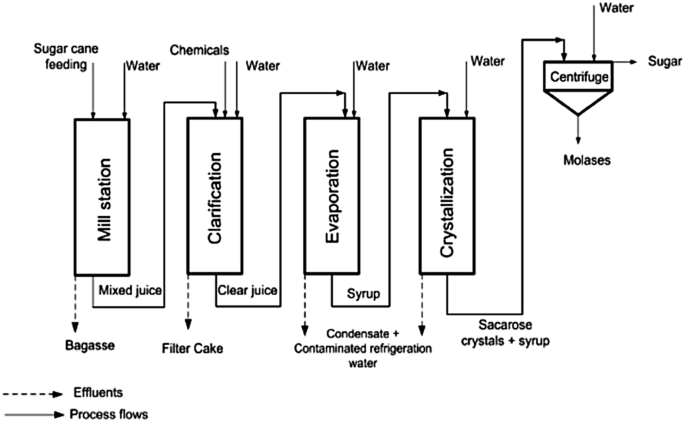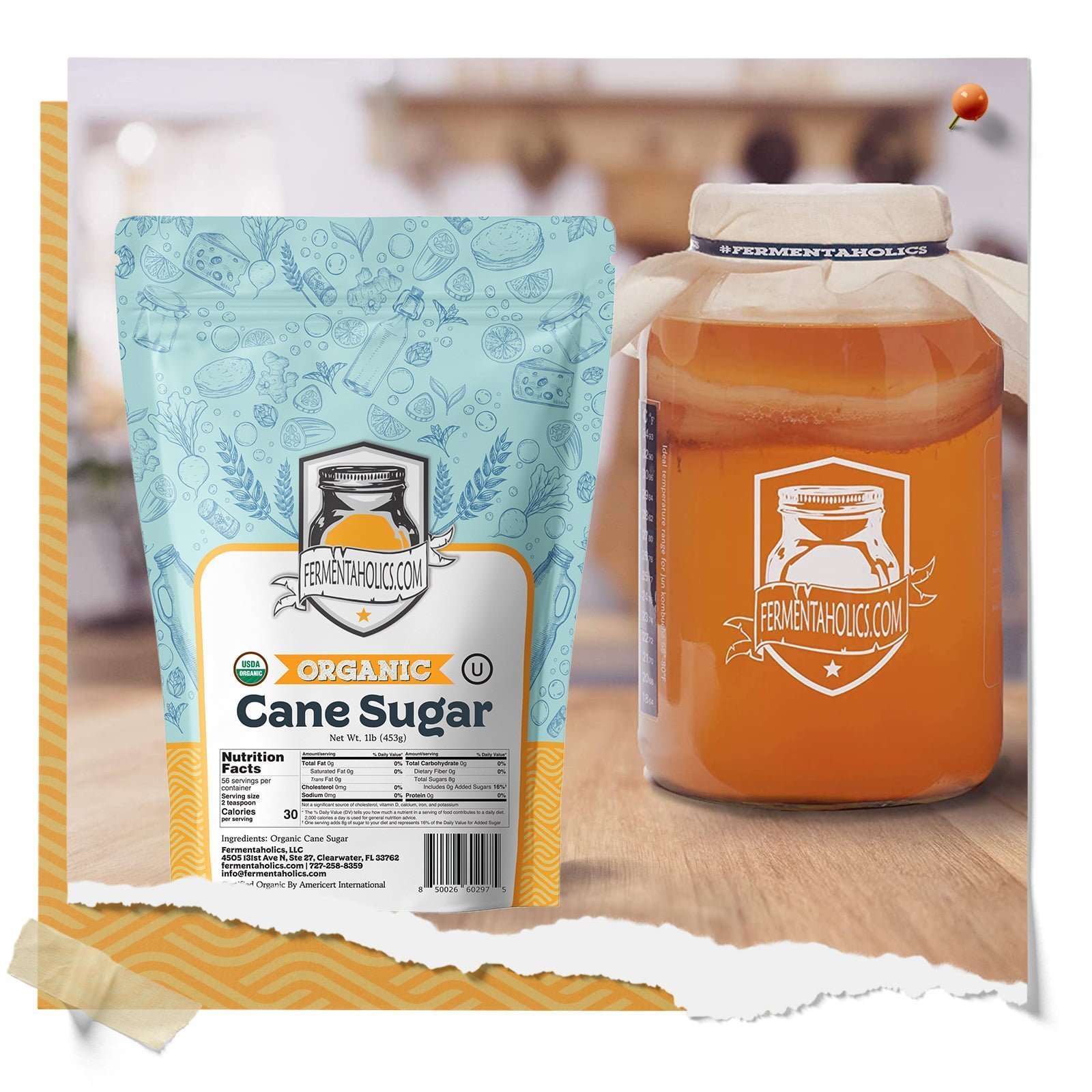12 Must-Know Facts About What Is Sugar Cane Used For Globally
Wiki Article
Checking Out the Versatile Uses of Sugar Cane Beyond Sugar
Sugar Cane is often connected exclusively with sugar, yet its applications expand far past. This versatile plant plays a pivotal duty in different sectors, including bioplastics and biofuels. In addition, its fibers add to sustainable construction and fabrics. The economic effects of sugar Cane production further highlight its significance. As advancements proceed to arise, the potential of sugar Cane to drive financial and environmental advancements ends up being increasingly apparent. What other surprises does this resilient plant hold?The Role of Sugar Cane in Biofuels
As countries look for lasting power sources, sugar Cane has become a crucial player in the biofuels sector. This exotic plant is rich in sucrose, which can be fermented to create ethanol, a renewable gas option to fossil fuels. The growing of sugar Cane for biofuel production not just reduces greenhouse gas exhausts yet also adds to power safety and security, specifically in sugar-producing countries.Additionally, sugar cane-derived ethanol can be blended with gasoline, enhancing its octane ranking and decreasing reliance on non-renewable resources. The byproducts of sugar Cane handling, such as bagasse, are useful for creating power, making the entire production cycle energy-efficient.
Research remains to explore sophisticated methods for taking full advantage of energy yield from sugar cane, solidifying its role in the shift to cleaner energy options. As global need for sustainable gas boosts, sugar Cane attracts attention as an essential element of the biofuel market.
Sugar Cane as a Resource of Bioplastics
The environmental effects of plastic air pollution are increasingly worrying, sugar Cane provides an appealing choice as a source of bioplastics. Stemmed from sustainable resources, bioplastics made from sugar Cane can significantly decrease dependence on petroleum-based plastics. These bioplastics are created via the fermentation of sugars drawn out from the cane, leading to materials that can be biodegradable or compostable, depending on their formula.Making use of sugar Cane bioplastics not only decreases carbon discharges but additionally promotes lasting farming techniques. By using agricultural waste and results, the overall ecological footprint of production is minimized. Additionally, products made from sugar Cane bioplastics can perfectly incorporate right into existing waste management systems, addressing concerns regarding waste accumulation.
As markets look for sustainable services, sugar cane-based bioplastics represent a practical alternative that straightens with global efforts to deal with plastic contamination and foster a round economic climate.
Medicinal Applications of Sugar Walking Cane
Sugar Cane is identified for its antioxidant properties, which add to various health advantages. Furthermore, it has actually been used in typical treatments throughout cultures, highlighting its relevance in alternative medicine. These characteristics highlight the potential of sugar Cane in the field of medicinal applications.
Antioxidant Characteristics of Walking Stick
Many researches have actually disclosed that sugar Cane has considerable antioxidant residential properties, making it an important part in medical applications. The phenolic compounds located in sugar walking cane, such as flavonoids and phenolic acids, contribute to its capability to neutralize complimentary radicals, thereby decreasing oxidative anxiety in the body. This antioxidant activity is connected to various health benefits, including improved cardio health and boosted immune feature. In addition, sugar Cane extracts have been revealed to display anti-inflammatory impacts, which can additionally support total wellness. By combating oxidative damage, sugar Cane may play a role in the avoidance of chronic illness, making it an interesting topic of study for its potential healing uses in contemporary medication.Traditional Remedies and Uses
While contemporary medicine commonly relies upon artificial substances, standard remedies using sugar Cane emphasize its historical relevance in various societies. In many exotic areas, sugar Cane juice has actually been made use of as a natural solution for conditions such as dehydration and digestive system concerns. Its high water web content and necessary nutrients make it a favored treatment for urinary system infections and kidney rocks. Additionally, sugar Cane is believed to possess anti-inflammatory homes, assisting in the relief of respiratory system problems and aching throats. Folk medication often incorporates sugar Cane in mixtures to boost power and enhance total wellness. These age-old methods highlight the versatility of sugar walking cane, expanding its worth past sweetness to encompass health and wellness applications.Eco-Friendly Building And Construction Products From Sugar Cane
Sugar walking cane, commonly recognized for its pleasant return, is gaining attention as a source of environmentally friendly construction materials. These materials supply lasting structure remedies, featuring biodegradable composites that minimize environmental effect. In addition, sugar cane-derived products offer effective insulation properties, enhancing power efficiency in frameworks.Lasting Structure Solutions
As the international need for lasting construction products increases, innovative options stemmed from sugar Cane have actually become a viable choice. This renewable resource offers various applications in green structure remedies, especially through dig this its by-products. Sugar Cane fibers, understood for their toughness and toughness, can be utilized in creating insulation products and composite panels. In addition, the juice and molasses from sugar Cane can be refined into bio-based adhesives, lowering reliance on petroleum-based items. The usage of sugar Cane not only minimizes waste but likewise adds to decrease carbon emissions during production. In addition, including these materials right into construction practices sustains the round economy, advertising sustainability while attending to the pressing environmental difficulties faced by the building and construction sector.Biodegradable Composite Products
Eco-friendly composite products have actually gathered attention as lasting options in building, particularly those obtained from sugar cane. These products utilize the fibrous results of sugar cane, such as bagasse, to develop compounds that are both light-weight and solid. By incorporating these natural fibers, manufacturers can produce materials that decrease dependence on non-renewable resources and traditional plastics. The sustainable nature of sugar Cane composites not just lessens ecological influence but likewise sustains farming economic situations by offering extra income streams for farmers. Furthermore, the biodegradability of these compounds warranties that they do not add to lasting waste in garbage dumps. As the building sector seeks greener remedies, sugar cane-derived composites provide an encouraging path toward extra environmentally friendly building practices.
Insulation Features and Benefits
The insulation residential or commercial properties of environmentally friendly construction products stemmed from sugar Cane deal substantial advantages in power effectiveness and environment control. Sugar Cane fibers possess all-natural shielding high qualities that aid manage indoor temperatures, minimizing the demand for extreme home heating or air conditioning. This characteristic contributes to reduce energy consumption, promoting sustainability in building practices. Additionally, the use of sugar cane-based insulation products is useful for interior air top quality, as they are less most likely to release unstable organic compounds (VOCs) contrasted to traditional insulation items. These products are eco-friendly, aligning with eco-conscious construction goals. As the construction sector looks for greener choices, sugar cane-derived insulation stands apart as an encouraging option that integrates performance with ecological duty, sustaining both energy cost savings and environmental conservation.Sugar Cane in the Textile Market
Although usually ignored, sugar Cane plays a significant role in the textile sector, largely via the production of sustainable fibers. These fibers, originated from the plant's results, are significantly recognized for their environment-friendly residential or commercial properties. Sugar Cane fibers, such as bagasse and sisal, are resilient and eco-friendly, making them eye-catching choices to conventional artificial fibers.Their use in textiles advertises sustainability by decreasing reliance on petroleum-based materials while also supplying an opportunity for waste reduction from sugar manufacturing. Furthermore, innovations in fabric handling have actually made it possible for suppliers to blend sugar Cane fibers with other materials, boosting the total quality and versatility of materials.
This shift towards including sugar Cane in fabrics mirrors a broader pattern in the market, going for environmentally responsible practices. As demand for sustainable materials remains to climb, sugar cane's role in textiles might expand, supplying both financial and ecological benefits.
Nutritional Conveniences and Pet Feed

Additionally, sugar Cane contains important minerals and vitamins that enhance the dietary profile of pet feed, boosting resistance and overall health. Its wonderful taste and palatability make it an enticing feed option, encouraging feed consumption amongst pets. By including sugar Cane into their diet plans, livestock producers can reduce dependence on conventional feed resources, potentially decreasing feed expenses while keeping animal health and wellness and productivity. Consequently, sugar Cane emerges as a lasting and nourishing alternative in the field of animal farming.
The Economic Influence of Sugar Cane Production
While lots of farming products add to neighborhood economic situations, sugar Cane manufacturing attracts attention because of its substantial financial effect across different areas. This functional plant not only provides job opportunity in farming, processing, and distribution yet likewise sustains secondary sectors such as transportation and production. In nations like Brazil and India, sugar Cane is an essential motorist of country development, fostering economic stability and improving livelihoods.The by-products of sugar cane, including ethanol and molasses, further expand revenue streams, decreasing and producing extra markets dependency on traditional sweeteners - What Is Sugar Cane Used For. As international need for Visit Your URL sustainable power rises, the role of sugar Cane in biofuel manufacturing is ending up being significantly famous, attracting financial investments and enhancing local economic situations. Generally, the economic implications of sugar Cane manufacturing are extensive, influencing both neighborhood task markets and wider economic fads in regions reliant on this vital crop
Frequently Asked Concerns
How Is Sugar Cane Processed Into Biofuels?
The handling of sugar Cane into biofuels includes removing juice, fermenting it into ethanol, and improving the item. This technique utilizes the plant's natural sugars, changing them into renewable resource sources for numerous applications.What Are the Environmental Benefits of Making Use Of Sugar Cane?
The ecological benefits of using sugar Cane include decreased greenhouse gas emissions, improved soil health through lasting farming methods, and reduced reliance on fossil fuels, which collectively contribute to a more green and lasting agricultural system.
Can Sugar Cane Be Expanded in Any Kind Of Environment?

Sugar Cane flourishes in tropical and subtropical climates, needing warm temperature levels, enough sunlight, and sufficient rainfall. Its development is restricted in colder areas, making it improper for pleasant or frozen climates where frost occurs.
What Are the Historical Uses Sugar Walking Stick?
Historically, sugar Cane offered different functions past sweetening - What Is Sugar Cane Used For. It was utilized for creating rum, as a source of biofuel, in traditional medicine, and for crafting materials like paper and molasses, showcasing its varied applications throughout different societiesExactly How Does Sugar Cane Impact Citizen Economies?
The effect of sugar Cane on neighborhood economic situations is significant, giving work, boosting agricultural fields, and promoting profession. Its cultivation supports rural source of incomes and stimulates neighborhood markets, adding to total financial growth and community growth.The financial ramifications of sugar Cane manufacturing additionally emphasize its significance. Acquired from sustainable sources, bioplastics made from sugar Cane can significantly decrease dependence on petroleum-based plastics. Biodegradable composite products have actually gathered interest as lasting options in building and construction, specifically those acquired from sugar walking cane. These materials utilize the coarse by-products of sugar cane, such as bagasse, to produce compounds that are both lightweight and strong. While many farming commodities contribute to regional economic situations, sugar Cane production stands out due to its significant financial effect throughout various areas.
Report this wiki page